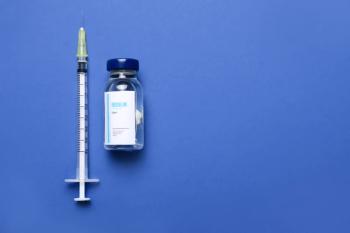
- Vol. 164 No. 6
- Volume 164
- Issue 6
How to Differentiate Between Look-Alike Sound-Alike Drugs
When drugs are hard to tell apart, mistakes happen-one study may have found a solution.
A
“It can be easy to confuse two LASA drugs. Having the indication for a drug can help pharmacists recognize potential LASA drug errors, particularly if the indications for two LASA drugs are very different,” says Christine Cheng, PharmD, lead author of the study.
Cheng, a clinical pharmacist in the Disease Decision Support Group at First Databank Inc., says the study sought to determine to what extent LASA drugs on the Institute for Safe Medication Practices’ (
Results of the study were published in the May 2018 issue of the Journal of the American Medical Informatics Association. Cheng says that the study used ISMP’s list of easily confused drugs names as its list of LASA drugs. The source for indications was a commercial knowledge base (First Databank MedKnowledge Indications Module) that includes both FDA-approved and off-label indications for drugs.
The study excluded certain drugs from the ISMP list. For example: drugs no longer marketed or not marketed in the United States, medical supplies, medical devices, and dietary supplements. It evaluated 278 pairs of drugs with LASA names involving 452 unique drugs. There were 165 (59%) LASA pairs with no overlap in high-level indications, 58 (21%) LASA drug pairs with partial overlap, and 55 (20%) LASA drug pairs with complete overlap.
“This means that the majority of LASA drug pairs on the ISMP list could be differentiated with even high-level general indications. Had we used more granular indications, we likely would have been able to differentiate even more LASA pairs.
Patient Safety
Cheng said if pharmacists and physicians know what the purpose of the drug, it’s easier to see if the dosing is right, if it’s the right regimen, and if the patient carries the correct diagnosis.
She added that it’s a good idea for pharmacists to confirm that the patient knows the purpose for each of the drugs they’re taking. “It’s empowering them to know they’re taking each of their medications and to ask questions.”
Articles in this issue
over 7 years ago
How Pharmacies Are Confronting Rising Drug Costsover 7 years ago
Pharmacists Get Involved in Direct Patient Careover 7 years ago
What Do Pharmacists Have to Do with Dermatology?over 7 years ago
Small Doses: News for Pharmacists in Juneover 7 years ago
Why You Should Become Board Certified in OncologyNewsletter
Pharmacy practice is always changing. Stay ahead of the curve with the Drug Topics newsletter and get the latest drug information, industry trends, and patient care tips.























































































































